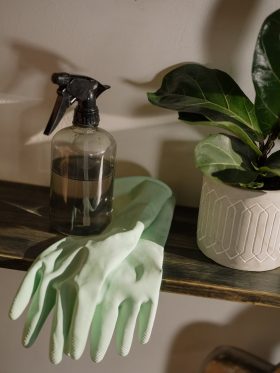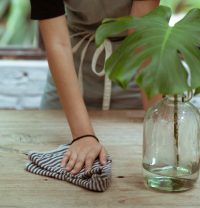Healthy Buildings Australia
Providing you safe surfaces and pure air using advanced technologies
Effective long lasting family friendly mould treatment to prevent health issues and building damage. Safe for people, pets and plants.
Ask about our mould preventative maintenance program using advanced technologies and techniques.
Healthy Buildings Australia provides advanced technologies to eliminate and prevent the growth of bacteria, mould, mildew and other known contaminants in the air, water and surfaces.
We understand how biology can negatively impact your facility, staff, family members and pets. We work in industrial, healthcare, commercial and residential settings, each having its own unique environmental challenges.
Our programs work to to mitigate problems using the latest antimicrobial technologies, and submicron air filtration.
Is mould in your home or workplace making you SICK?
When is mould a problem?
You know you have mould when you smell the “musty” odour or see small black or white specks along your damp bathroom or basement walls. When mould grows inside your home, it can damage the structure of your home, furnishings and other possessions.
Mould is often found in areas where water has damaged building materials and furniture from flooding or plumbing leaks. Mould often grows in rooms with both high water usage and humidity, such as kitchens, bathrooms, laundry rooms, and basements. If you notice mould or know of water-damaged areas in your home, it is time to take action to control its growth.
“
I can strike “mouldy house” off my list of worries
“We had Alan attend our old Queenslander home due to mould in and around a poorly ventilated bathroom. While there, he inspected the other rooms and showed me where mould was also growing on the ceiling of both of my children’s bedrooms, the master bedroom and a number other places around the house.
He attended to our job immediately out of concern for our young children and did such a thorough, fantastic job. We have had no further issues despite wet weather which is when we used to have mould problems pop up. It’s such a relief to know that he’s dealt with the issue using all non-toxic chemicals and I can strike ‘mouldy house’ off my list of worries. His work is guaranteed for a long time and we haven’t seen any reoccurrence, but I have kept Alan’s details tucked away for if we ever do! Great service, legend of a man. Highly recommend. “
Rhiannon, Indooroopilly QLD
Mould spores
How does mould occur?
Mould reproduces by sending microscopic spores through the air. Mould spores perform much the same function as seeds do for plants, starting new colonies of mould when they land where the conditions are right for growth: warm, moist and preferably dark.
When spores have sufficiently large quantities and the conditions for growth are right, they can present a health hazard to people and pets.
Some building materials are more prone to mould than others. For instance, wood (especially untreated wood) and ceiling tiles made from particle board are frequently affected by mould. Other products used in many buildings which may be susceptible to mould growth include carpet, upholstery and other fabrics, wallpaper, drywall and even some types of paint.

Causes of Mould
Aside from a water intrusion event such as flooding, leaking roofs, damaged pipes or hot water systems etc, the most common cause of mould comes from when excess humidity is present. This is when the outside air is cooler than the inside air which will result in condensation and subsequently an excess of moisture inside your home.
Is Mould Hazardous To Your Health?
Mould can affect human health through allergic reactions, infections or toxic responses.
Reactions to mould may be due to a few different substances that mould can produce, including allergens and irritants. Some types of mould also produce poisonous substances called mycotoxins. Experiencing a reaction when inhaling or touching mould or spores is relatively common and this reaction may happen immediately after being exposed to the mould or after a delay.


WHO IS AT RISK?
Infants and young children as well as expectant mothers, the elderly and people who are immunocompromised may all be at risk of developing health problems from even a relatively small number of spores. Those who suffer from respiratory problems like asthma are especially at risk of becoming ill due to exposure to mould and are strongly advised to avoid exposure if at all possible.
DETRIMENTAL HEALTH REACTIONS TO MOULD
If you are especially sensitive to mould, you may experience a reaction which is similar to other allergic reactions, with symptoms including skin and eye irritation, congestion or difficulty breathing.
There are also people who have very severe mould allergies and their reactions to mould exposure may be extreme, including fever and shortness of breath. Those who have pre-existing respiratory problems may even develop infections of mould in their respiratory system. These kinds of severe reactions are more common in those who spend extended periods of time exposed to large amounts of mould, such as farmers who work with mouldy hay or other decaying vegetation.
How do I get rid of my mould problem
Most mould growth isn’t even visible to the naked eye, which is why one of the first steps in any mould removal is to identify where the source of the mould is so that it can be addressed.
The staff at Healthy Buildings Australia are trained in the most effective and safest mould remediation system there is. Our system does not require you to relocate. You won’t even have to remove the furniture or plants from your home or office and you can rest easy in the knowledge that the mould spores have been eliminated.


Why treat the entire house?
Mould spores are present in the air and spread through air movement, are carried on clothing and readily circulate from one area to another. Under the right conditions the mould will return in other rooms if the entire dwelling is not treated.
Our Story
What People Say
About Us


What products do you use?
We use Goldmorr, the most innovative products available for the elimination of mould spores. The Goldmorr System will generally use only two products during the mould cleaning process.

GM6000 is used on hard surfaces, such as walls, ceilings, tiles and concrete and will not remove the paint from your walls or ceiling.

Part two of our process is the most important. We will fog the entire structure with GM2000, thoroughly tested and designed as a non-mechanical “air scrubber” to eliminate mould spores and other contaminants from the indoor environment, preventing other colonies of mould being able to form.

GM2000 benefits:
- Will not irritate – skin tested and achieved a non-irritant status
- Biodegradable – smart environmental choice
- non-toxic – safe for people and pets
- non-corrosive – will not harm even the most delicate of fabrics nor discolour them
- non-bleaching – safe to use on any surface
- unscented – will not mask odours
